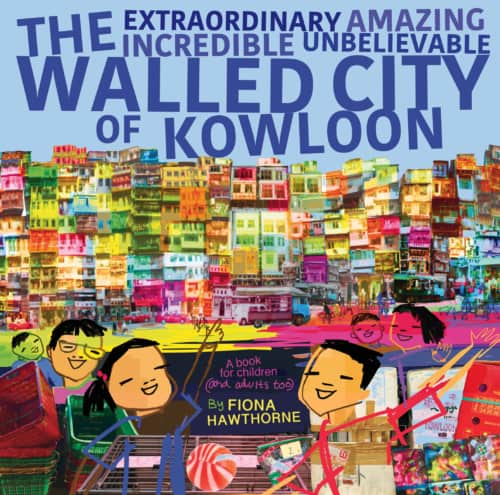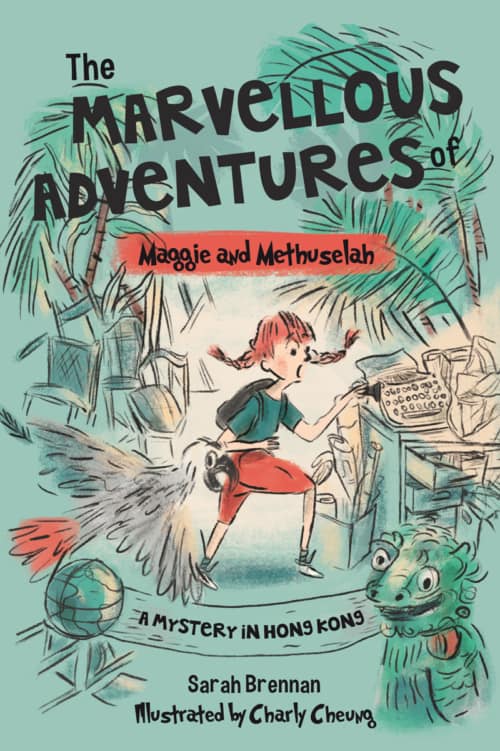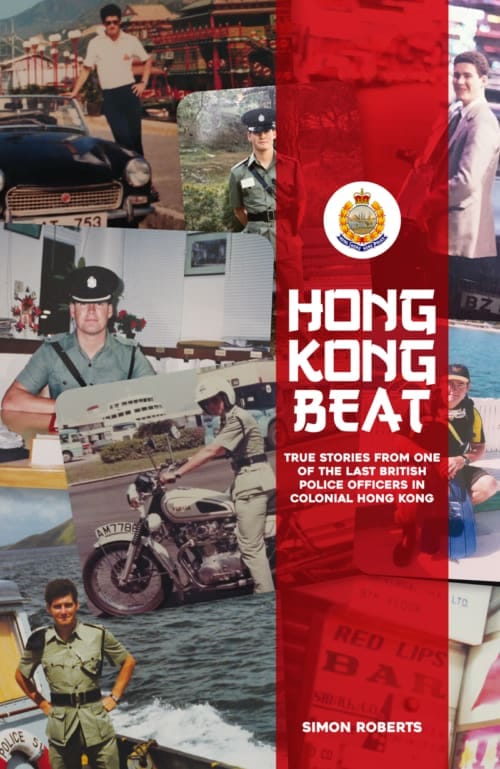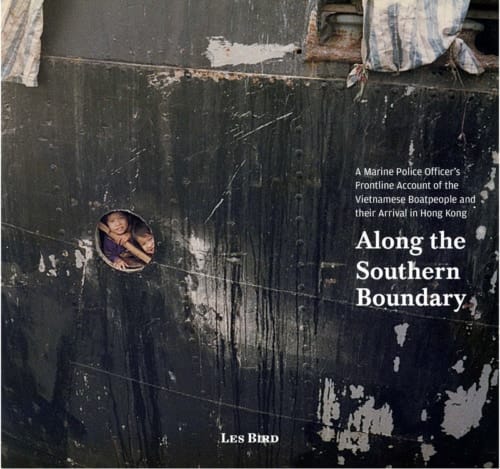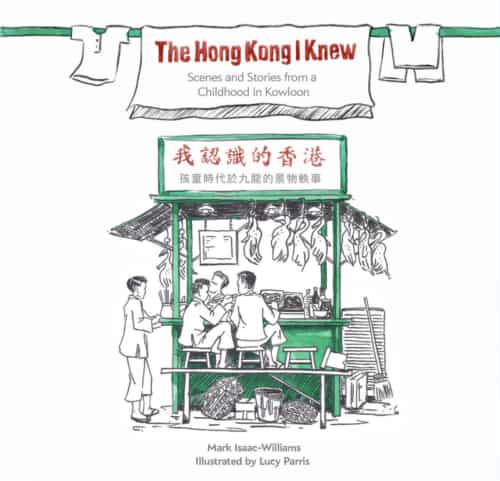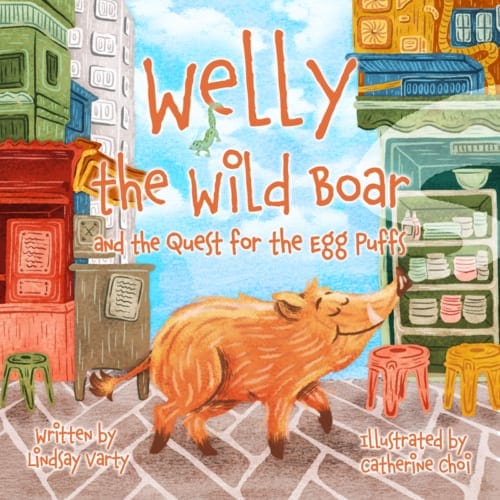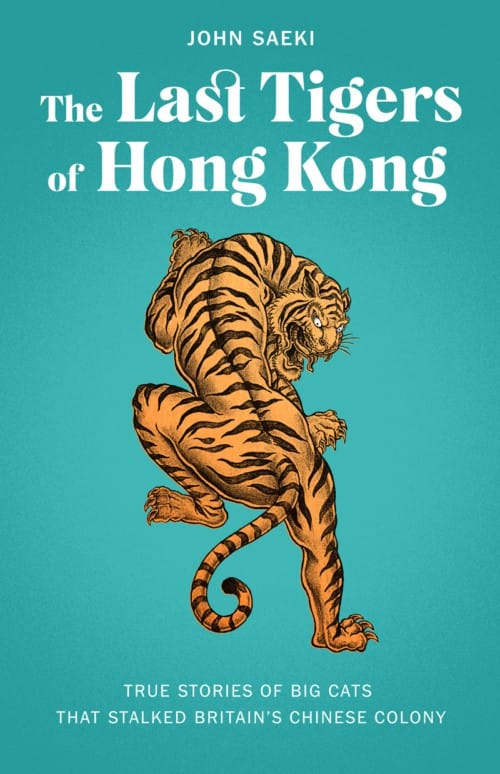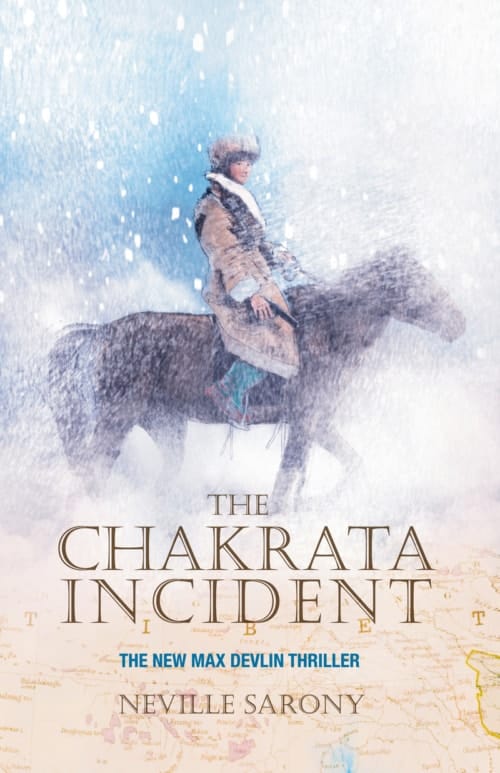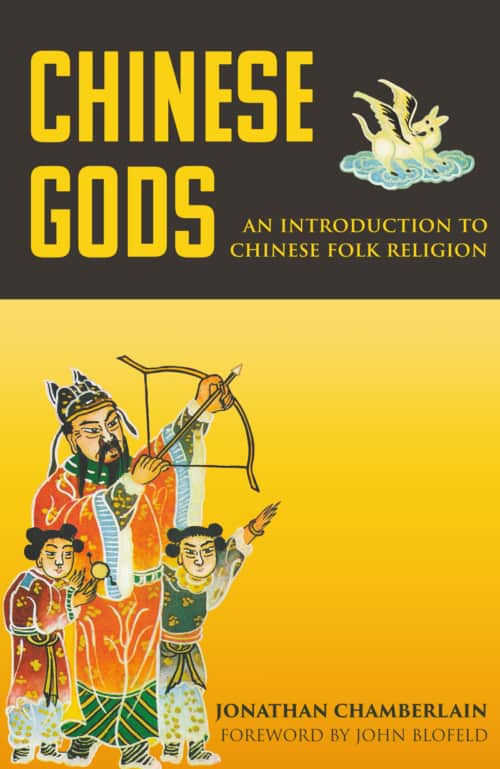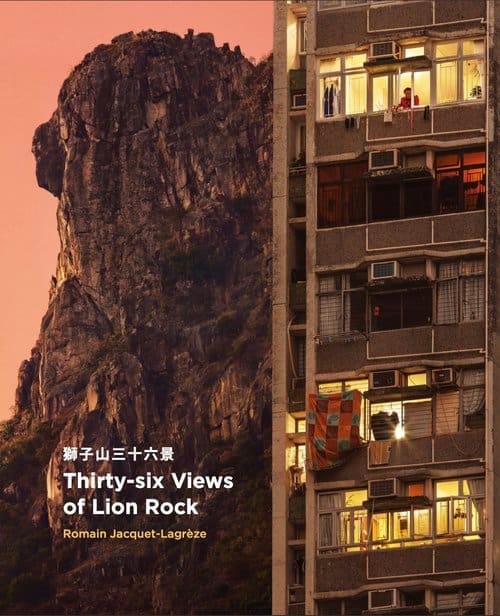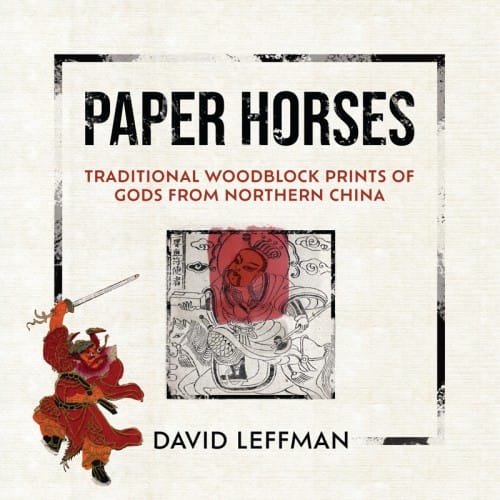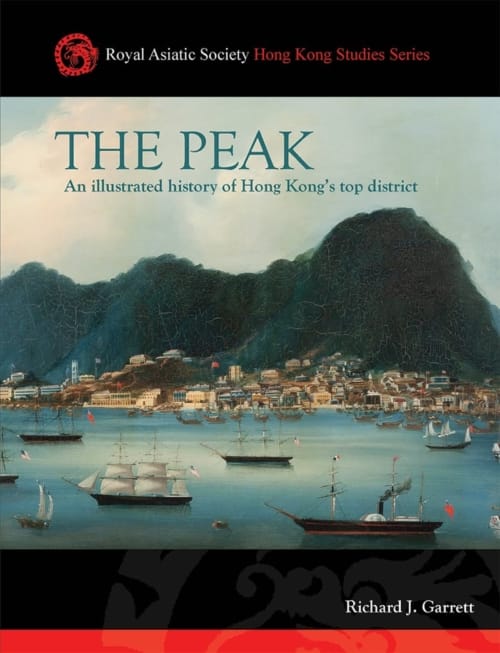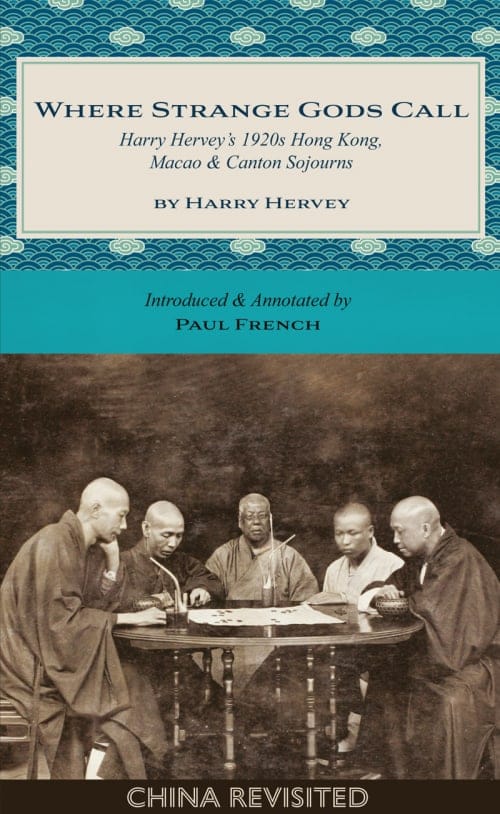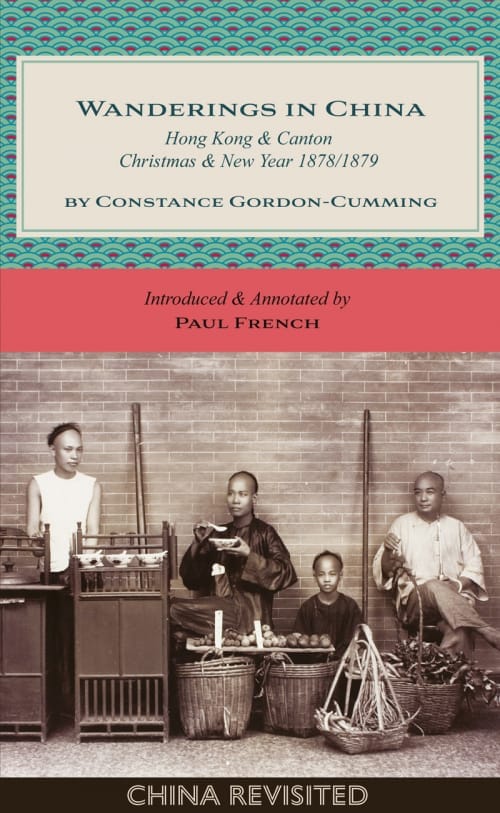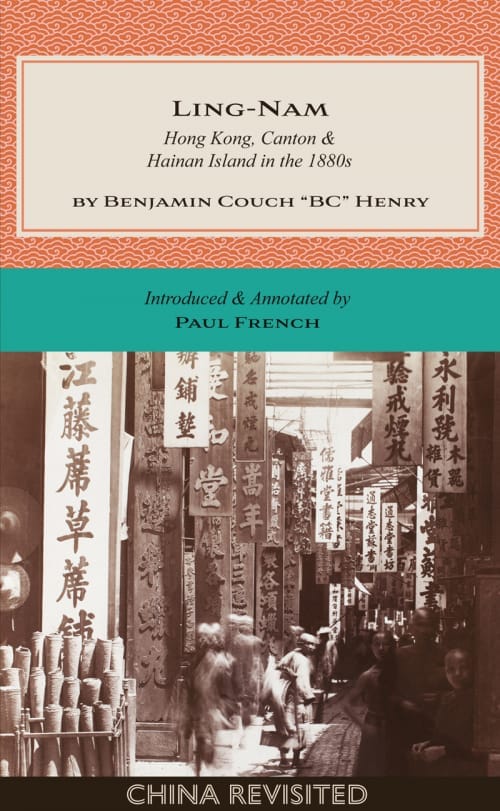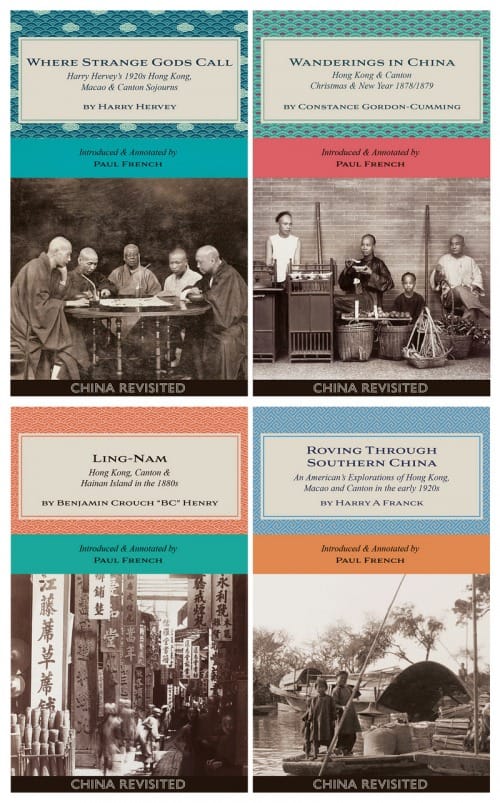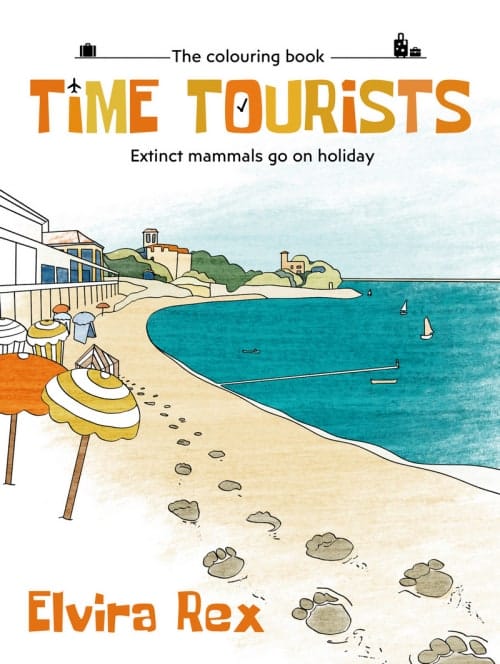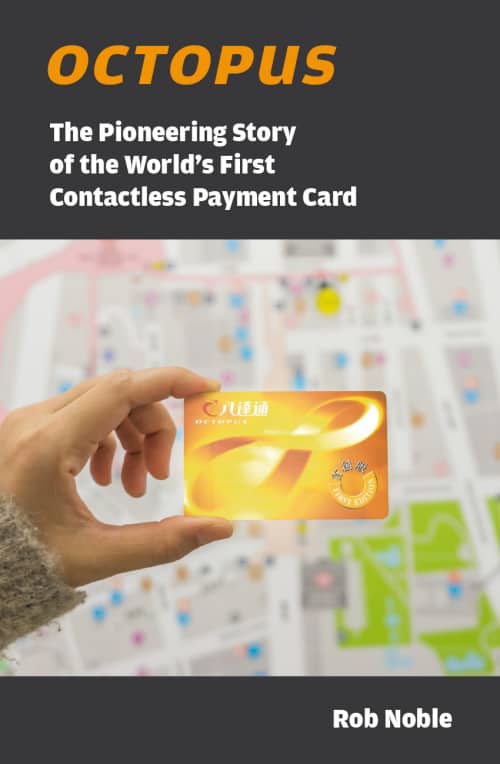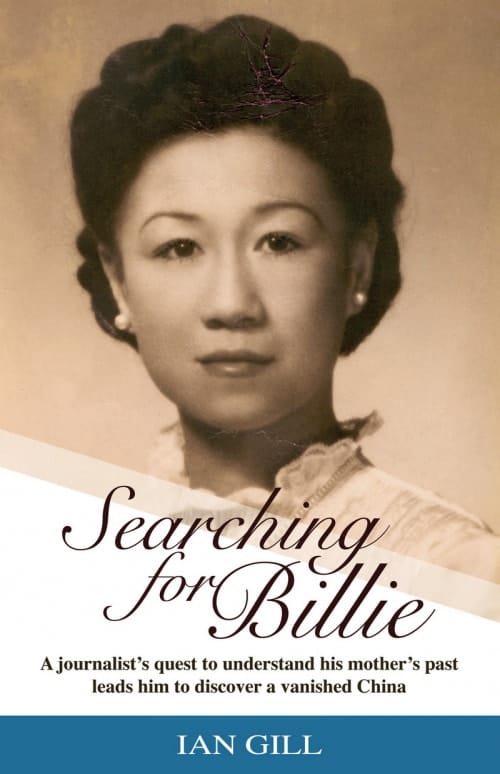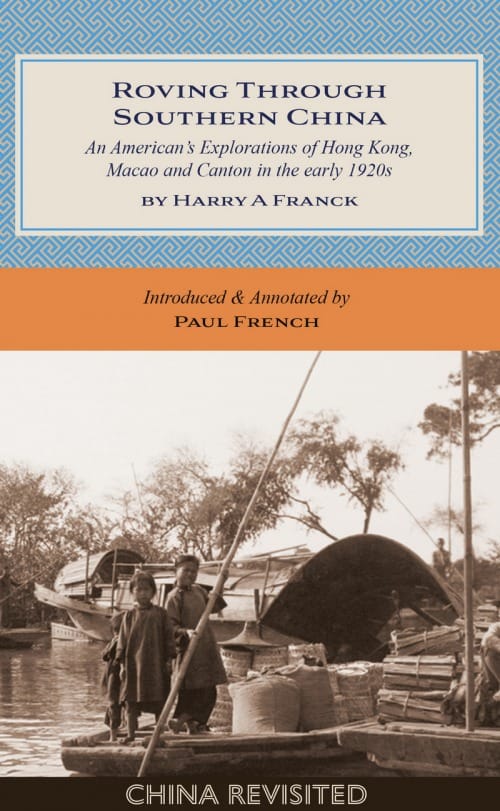-
Out of stock
 "This is the story of my life: my autobiography. It is also the story of the music scene for almost a century in Hong Kong. In the past, I have mainly communicated with fans and listeners through music. This time, however, is different. After years of hard work, I have finally achieved my wish. I am sharing my life story in words and pictures." All The Way With Ray tells the story of a man from humble beginnings who through hard work and dedication rose to become a giant in the music industry. His passion for popular music, especially that of the 1930s through the 1960s, has brought enormous pleasure to millions over the airwaves for more than 50 years. His daily late-night show built almost a cult following among Hong Kong people, here and overseas, especially those of an older generation. More than just a story of one man, All The Way With Ray documents the history of the music scene in Hong Kong from the inception of radio broadcasting in 1929 to the present day. Against the backdrop of the territory's development and vicissitudes of that time, it charts the success of many local celebrities who credit their stardom in Band Sound, cover songs, Cantopop and folk music in no small part to help from 'Uncle Ray'. LOOK INSIDE THIS BOOK Click the following link to read excerpts from the book! Chapter One: The Early Years
"This is the story of my life: my autobiography. It is also the story of the music scene for almost a century in Hong Kong. In the past, I have mainly communicated with fans and listeners through music. This time, however, is different. After years of hard work, I have finally achieved my wish. I am sharing my life story in words and pictures." All The Way With Ray tells the story of a man from humble beginnings who through hard work and dedication rose to become a giant in the music industry. His passion for popular music, especially that of the 1930s through the 1960s, has brought enormous pleasure to millions over the airwaves for more than 50 years. His daily late-night show built almost a cult following among Hong Kong people, here and overseas, especially those of an older generation. More than just a story of one man, All The Way With Ray documents the history of the music scene in Hong Kong from the inception of radio broadcasting in 1929 to the present day. Against the backdrop of the territory's development and vicissitudes of that time, it charts the success of many local celebrities who credit their stardom in Band Sound, cover songs, Cantopop and folk music in no small part to help from 'Uncle Ray'. LOOK INSIDE THIS BOOK Click the following link to read excerpts from the book! Chapter One: The Early Years -
 Imagine living in a high-rise mini-city that people built with their own hands. This city took up only the size of a sports stadium, but it was home to sixty thousand people! What would it be like to live in the most tightly packed place on Earth? Fiona wanted to find out, so she went there to paint, draw and meet the people of the amazing Kowloon Walled City. There was nowhere else in the world like it. The extraordinary things she discovered are inside this book… Based on Fiona Hawthorne's real-life experiences in the famous Walled City of Kowloon, this is a children's book which is also for adults. A young female artist ventures into a place that everyone tells her is dangerous, but she spends time getting to know the people, and draws and paints their everyday lives. By doing so, she discovers the truth: that the Kowloon Walled City was industrious, child-friendly and welcoming. Even though the Walled City was very much Hong Kong, this story of discovery and acceptance is universal. Vibrant, colourful, detailed artwork depicts the busy life of a unique community that no longer exists.
Imagine living in a high-rise mini-city that people built with their own hands. This city took up only the size of a sports stadium, but it was home to sixty thousand people! What would it be like to live in the most tightly packed place on Earth? Fiona wanted to find out, so she went there to paint, draw and meet the people of the amazing Kowloon Walled City. There was nowhere else in the world like it. The extraordinary things she discovered are inside this book… Based on Fiona Hawthorne's real-life experiences in the famous Walled City of Kowloon, this is a children's book which is also for adults. A young female artist ventures into a place that everyone tells her is dangerous, but she spends time getting to know the people, and draws and paints their everyday lives. By doing so, she discovers the truth: that the Kowloon Walled City was industrious, child-friendly and welcoming. Even though the Walled City was very much Hong Kong, this story of discovery and acceptance is universal. Vibrant, colourful, detailed artwork depicts the busy life of a unique community that no longer exists. -
 Illustrated by Charly Cheung Maggie loves hanging out with her best friends Methuselah (her talkative African Grey parrot) and Edmund (the richest boy in Hong Kong), but she loathes attending boring parties with her high-flying mum and dad! Little does she know that a Family Fun Day at Government House will trigger a thrilling adventure involving one of Hong Kong's greatest mysteries: what happened to the immensely valuable Chater Collection, which was hidden on the eve of the Japanese invasion in World War Two? A funny, exciting story for pre-teens set in one of the world's most exotic cities, where cultures meet and risks are for the taking! For readers aged 8 to 12 who love mystery, history and adventure! With 80+ illustrations. "Sarah Brennan’s work is a meeting between traditional Asian narratives and the universal taste of children for graphic stories. The tale-telling gifts shown in these books, along with the exuberance of the language and rhymes, make them unique in children’s literature." – Thomas Keneally, Booker Prize-winning author of Schindler’s Ark
Illustrated by Charly Cheung Maggie loves hanging out with her best friends Methuselah (her talkative African Grey parrot) and Edmund (the richest boy in Hong Kong), but she loathes attending boring parties with her high-flying mum and dad! Little does she know that a Family Fun Day at Government House will trigger a thrilling adventure involving one of Hong Kong's greatest mysteries: what happened to the immensely valuable Chater Collection, which was hidden on the eve of the Japanese invasion in World War Two? A funny, exciting story for pre-teens set in one of the world's most exotic cities, where cultures meet and risks are for the taking! For readers aged 8 to 12 who love mystery, history and adventure! With 80+ illustrations. "Sarah Brennan’s work is a meeting between traditional Asian narratives and the universal taste of children for graphic stories. The tale-telling gifts shown in these books, along with the exuberance of the language and rhymes, make them unique in children’s literature." – Thomas Keneally, Booker Prize-winning author of Schindler’s Ark -

Sex, drugs, gambling, ghosts, drinking, rugby, overseas adventures – and even some police work.
Hong Kong on the edge of empire was a place teeming with triads, smugglers, Chinese immigrants and Vietnamese refugees. Simon’s memoir of his time in the Hong Kong police force – from the 1970s until after the 1997 handover – is a fast-paced tale of his exploits. From the murky back streets of Kowloon to the open seas in the Marine division, his shocking and hilarious tales offer an alternative look back at what life was really like on the Hong Kong beat.
LOOK INSIDE THIS BOOK
Click the following links to read excerpts from the book. -

With a foreword by Lord Wilson of Tillyorn, Governor of Hong Kong, 1987-1992
“We had no jurisdiction outside of Hong Kong waters. But we could see their vessels sinking in heavy seas. It was life or death, right there. We just went.”
Former Marine Police officer Les Bird tells of the harrowing sea journey to Hong Kong made by tens of thousands of refugees in the years that followed the end of the Vietnam War. As he patrolled the southern maritime boundary of Hong Kong, he photographed their makeshift boats and later the people-smuggling vessels coming in – including the Sen On, a freighter ship that was abandoned by its crew and ran aground on Lantau Island.
With this previously unpublished collection of personal photographs, taken by himself and his former police colleagues, he tells the stories of these boatpeople – the young children, the father who just bought a boat to embark on a 1,000-mile journey, and the disillusioned North Vietnamese battle-hardened veterans – all searching for a new life.
LOOK INSIDE THIS BOOK
Click the following links to read excerpts from the book. -

Illustrated by Lucy Parris
Returning to Hong Kong in 1947 after the Japanese occupation, seven-year-old Mark Isaac-Williams had the whole of Kowloon as his playground. Billeted with his family in the once-grand but now dilapidated Peninsula hotel, his life was full of adventure – from the rooftop to the basement, he knew the hotel's every inch.
Roller-skating and horseback riding in Kowloon's streets and paddling in the hotel's fountain were a child's dream after the privations of war. From rickshaws to firecrackers and ladies with bound feet to the ever-present rat problem and smelly beancurd vendors, the mystique of Hong Kong in the 1940s and 50s is brought colourfully to life by Mark's captivating and richly illustrated story.
“The Hong Kong I Knew captures all the glory and quirkiness of a burgeoning east-meets-west colony at mid-century. Fizzing firecrackers, rickshaws in the rain, balusters of bamboo scaffolding – the charming illustrations and commentary are sure to inspire fond nostalgia for a bygone time.” — Claire Chao, author of Remembering Shanghai
-

Illustrated by Jane Tanner
Shortlisted for the 2018 Australian Prime Minister's Literary Award, Children's Fiction
A captivating and beautifully illustrated story about three sisters who find a stranded whale on a windswept beach and try to save it.Bleak was the day and the wind whipped down
when I and my sisters walked to town ...
With a powerful, poetic text, wonderful to read aloud, and illustrations full of life and movement, Storm Whale celebrates the majesty and vulnerability of nature and our place in it."A story of the sea and the possibilities of interactions between humans and other creatures… a story of human kindness and hope" - Magpies
Ages 4 to 8
-

Illustrated by Catherine Choi
Welly the wild boar loves nothing better than eating fluffy egg puffs! He roams his home city of Hong Kong in search of his favourite snack, but he finds many other tasty foods to try along the way.
This poetic and fun tale of a loveable local creature will introduce you to traditional Hong Kong snacks and persuade you to go out and try some for yourself. See how many of these hometown street foods you can find!
-

With sensitivity and tenderness, Starkie Mak has captured a tale of the immigrant experience, from the eyes of a child. Masterfully rendered with careful homage paid to the children’s books that have touched the hearts of so many, Mak’s brush strokes and calligraphy evoke the turbulent emotions and difficulties a child must surely experience when having their little world upended, only to have a much larger and foreign world unfold before them.
In a heartbreaking parting, a child says goodbye to her family and is left with her imagination as guide. In search of a new life in a new land, a child retreats into the realm of fantasy. Through the devastating pain of childhood loss emerges the joy of a child’s triumph.
-

Do you have a wardrobe full of clothes but constantly feel like you have nothing to wear? Are you lured by a sale but buy because the price is right instead of the style? Are you guilty of throwing clothes 'away' without knowing where they really go? Would you love to consume more consciously but don't know where to start?
If you've answered yes to at least one of these questions, then this is the book for you.
Hong Kong-based retail professional and sustainable fashion advocate Sheryl Bolden demystifies sustainability within the fashion industry and offers a unique insight into how clothes are bought, worn and discarded. The book's informal chatty tone is relatable, and the pages are packed with tips, tricks and advice on becoming a stylish, savvy and conscious consumer.
Split into three sections that can be read in any order, the book covers everything from shopping and editing your own wardrobe, to exploring innovative new materials and the future of fashion, to simply understanding how fast fashion exploded and changed the industry forever. Punctuated with inspiring and witty quotes and illustrations, this book is perfect for those who strive to curate a wardrobe that reflects their values as well as their style.
-

With pen-and-ink illustrations by Gary Yeung
Tigers came to Hong Kong. They preyed on pigs, chickens, cattle and deer. They sometimes killed people. They came to Hong Kong most years through to the end of the 1950s, and possibly into the 1960s. As long as there were South China tigers in the wild, Hong Kong saw some of them.
They stopped coming when they were on their way to extinction in their homeland across the border. Not many people know this, and not many people believe it to be true. But it is true, tigers came. And this is the first written history of the Hong Kong tiger.
LOOK INSIDE THIS BOOK
Introduction Chapter 1
-

Major Max Devlin, poised for a commanding post in the Royal Gurkha Rifles, is seconded to the SIS for a joint assignment with the CIA at Chakrata, the headquarters of India’s All-Tibetan Special Frontier Force, aka the 22s.
Together with his American counterpart, Devlin is tasked with training and preparing a newly formed elite unit of the 22s for covert cross-border ops inside Tibet, as part of a tripartite project funded by the US to monitor China’s ever-expanding presence in the disputed areas. What begins as a welcome escape for the desk-bound Gurkha officer at the Ministry of Defence quickly becomes deadly toxic – and politically explosive.
A shamanic curse on the misogynist US Ranger risks torpedoing the mission. An Indian cabinet headed by a Sinophile premier and peopled by self-serving ministers is bitterly split on where national (read personal) interests lie. Into the mix come a ruthlessly ambitious Indian intelligence officer whose allegiance is unto himself and a bunch of local politicians bent on avenging the deaths of their salacious sons at the hands of Devlin and his Gurkha sergeant Deepraj.
Once across the Sino-Indian border, the SFF soldiers will be alone – unattributable and expendable if captured by the PLA. Deep into and high on the Himalayas, they come face-to-face with death and torture. Caught in the spinning geopolitical web are three remarkable women – two Tibetan officers and a Muslim combat surgeon – whose courage, faith and skill will be tested to the limits in circumstances beyond their wildest imagination.
As for Devlin, faced with a call on his principles as a professional soldier and the realisation of his cherished ambition in the Royal Gurkha Rifles, he must decide how the die is cast.
A prequel to The Dharma Expedient and Devlin’s Chakra, The Chakrata Incident is Max Devlin’s swansong as a British soldier, setting the scene for his and the trusted Deepraj’s intrepid adventures in the unforgiving terrain that is at the very heart of Asia.
-

with a foreword by John Blofeld
Chinese gods: Who are they? Where did they come from? What do they do?
Chinese folk religion is the underlying belief system of more than a billion Chinese people. Go into any Chinese home, office or restaurant and you will see altars, statues or paper ‘good luck’ images. And wherever there is a Chinese community there are temples and Earth God shrines. But what is the religion that makes sense of all these expressions of belief? How do these beliefs connect to Taoism, Confucianism and Buddhism?
Chinese Gods helps us understand the building blocks of this religion for which even the Chinese have no name – because the beliefs are so intertwined with language and culture they have no independent existence – and provides an in-depth analysis of 19 of the major gods of the Chinese pantheon.
Look inside this book
Click on the links to view sample pages from Chinese Gods. -

by Romain Jacquet-Lagrèze, published by Blue Lotus Editions
Lion Rock is not just any mountain. It’s Hong Kong’s most famous peak, laden with symbolism and meanings that are evolving over time. Inspired by Hokusai’s important woodblock series “Thirty-six Views of Mount Fuji” which was created in 1830, Romain set out to capture Hong Kong’s famous peak in a similar yet contemporary fashion, in order to express the many faces of this legendary mountain top.
Lion Rock is featured in each of the photos, some in the far distance obscured by high-rise buildings, traffic or bustling markets. In other images, it is more prominent, far removed from the urban jungle, oozing peace and tranquility. Some photos are shot at the break of day, others during the blue moment at dusk. In short, Thirty-six Views of Lion Rock reads like a letter to the mountain that Hongkongers know and love so well.
-

In 2020 a large album of “paper horses” – prayer prints of Chinese gods – appeared for sale. How had these fragile things, cheaply printed in the 1940s and meant to be ritually burned soon after purchase, survived intact for so long? And how come there were at least three other identical sets in collections around the world?
In answering this mystery, author David Leffman explores the history and techniques behind traditional Chinese woodblock printing, which dates back to at least the Tang dynasty (618-907). All 93 “paper horses” in the original album are reproduced alongside biographies of the gods, spirits and demons depicted, providing an illustrated introduction to the complex and fascinating world of Chinese folk religion.
LOOK INSIDE THIS BOOK
Click the following links to read excerpts from the book. -

Part of the Royal Asiatic Society Hong Kong Studies Series
The Peak is Hong Kong’s top residential district, where property prices are as high as the altitude. How did it become an exclusive enclave in the bustling business centre of 19th-century Asia?
The British wanted relief from summer heat and the Peak was the obvious place to escape it. When the Governor adopted Mountain Lodge as a summer getaway, development accelerated and the opening of the Peak Tram in 1888 made access easier. Gradually a community developed and a church, a club and a school were established.
This fully illustrated book describes how the now-popular tourist area developed over time and adapted as needs changed.
-

It took balls to go to Hong Kong.
When Scottish footballer Derek Currie was made an offer to travel to Hong Kong to play against the one sportsman he had dreamed of meeting on the field, he couldn’t say no.
From apprentice printer in Glasgow to playing football against Pelé in the Far East, singing with Stevie Wonder and shadow-boxing with Marvelous Marvin Hagler, Currie enjoyed a magical life as one of the first three European professional footballers in Asia. He was quickly nicknamed ‘Jesus’ by Hong Kong football fans.
Here he traces the early development of professional football in the then-British colony through his own career: the games, the places and the characters he met along the way.
Given a once-in-a-lifetime opportunity, he didn’t think twice – travelling 6,000 miles across the world to pursue his dream of professional football. In the years that followed, he met international stars from music, showbusiness, boxing and horse racing.
Here in words and pictures is his amazing story – if not for the photographic proof you could be forgiven for thinking it might be a fairy tale! It isn’t.
"An illustrious playing career. An excellent read." – Craig Brown CBE, former manager, Scotland national football team
LOOK INSIDE THIS BOOK
Contents and foreword Chapters 1 and 2 -
 By Harry Hervey, introduced and annotated by Paul FrenchNo. 1 in the China Revisited seriesAs a young man in the southern United States in the early years of the twentieth century Harry Hervey dreamt of travelling to Asia. He also dreamt of writing novels, movie scripts and travel books. He would do all these things. Eventually, in 1923, Hervey managed to find a way to get to the Far East working on a cruise liner. He was to spend time sojourning in Hong Kong, Macao and Guangzhou. His impressions of his travels through southern China, contained in his 1924 travelogue Where Strange Gods Call, is both lyrical and detailed, as well as atmospheric and informative. Walking from Central to Kennedy Town; the basement “dives” of Belcher’s Street to the private dining rooms of Queen’s Road; Macao’s Praia Grande to its infamous fan-tan houses, Hervey is a fascinating flâneur and guide. So too in Guangzhou, a city in upheaval, where Hervey encounters those fleeing warlord violence in the north and is granted an audience with Dr Sun Yat-sen.Hervey’s impressions of China would stay with him for the rest of his life, not least in his treatment for the 1932 movie Shanghai Express. Sadly, in the intervening century since the first publication of Where Strange Gods Call in 1924, Hervey’s name and work have been largely forgotten. Yet his early travel writing was to influence his later bestselling novels, popular short stories and Hollywood screenplays which, in turn, influenced American perceptions of Hong Kong, Macao and China.
By Harry Hervey, introduced and annotated by Paul FrenchNo. 1 in the China Revisited seriesAs a young man in the southern United States in the early years of the twentieth century Harry Hervey dreamt of travelling to Asia. He also dreamt of writing novels, movie scripts and travel books. He would do all these things. Eventually, in 1923, Hervey managed to find a way to get to the Far East working on a cruise liner. He was to spend time sojourning in Hong Kong, Macao and Guangzhou. His impressions of his travels through southern China, contained in his 1924 travelogue Where Strange Gods Call, is both lyrical and detailed, as well as atmospheric and informative. Walking from Central to Kennedy Town; the basement “dives” of Belcher’s Street to the private dining rooms of Queen’s Road; Macao’s Praia Grande to its infamous fan-tan houses, Hervey is a fascinating flâneur and guide. So too in Guangzhou, a city in upheaval, where Hervey encounters those fleeing warlord violence in the north and is granted an audience with Dr Sun Yat-sen.Hervey’s impressions of China would stay with him for the rest of his life, not least in his treatment for the 1932 movie Shanghai Express. Sadly, in the intervening century since the first publication of Where Strange Gods Call in 1924, Hervey’s name and work have been largely forgotten. Yet his early travel writing was to influence his later bestselling novels, popular short stories and Hollywood screenplays which, in turn, influenced American perceptions of Hong Kong, Macao and China.This publication of Hervey’s impressions of southern China also includes the sketches of his good friend the Savannah artist Christopher Murphy Jr., which were included in the first edition of Where Strange Gods Call and bring Hervey’s descriptions further to life.
“Approaching Canton we were gliding past ugly, ramshackle dwellings and go-downs; grass-thatched house-boats, sampans, junks, and lighters, and millions of roofs that were flung in uneven terraces against the sky.”
-
 By Constance Gordon-Cumming, introduced and annotated by Paul FrenchNo. 2 in the China Revisited seriesInveterate Victorian traveller and prolific artist Constance Gordon-Cumming, born in Glasgow in 1837, roamed far and wide from the Scottish Highlands to the American West; the islands of Hawaii to southern China. Even among her many adventures, her 1878/1879 trip to Hong Kong was momentous. Gordon-Cumming arrived just before Christmas 1878 to inadvertently witness the terrible “Great Fire” of Hong Kong that swept devastatingly through the Central and Mid-Levels districts.She then moved on to explorations of the streets, temples and Chinese New Year festivities in Canton (Guangzhou). Her detailed descriptions of the teeming streets of the city’s commercial districts and New Year temple fairs contrast with her temporary residence in the relative calm of the foreign enclave on Shamian Island. Venturing out of the city on expeditions, Gordon-Cumming gives us perhaps one of the most complete descriptions of the now long-gone market gardens of Fa-tee with the famed nurseries that cultivated a bewildering variety of flowers and ornamental trees.
By Constance Gordon-Cumming, introduced and annotated by Paul FrenchNo. 2 in the China Revisited seriesInveterate Victorian traveller and prolific artist Constance Gordon-Cumming, born in Glasgow in 1837, roamed far and wide from the Scottish Highlands to the American West; the islands of Hawaii to southern China. Even among her many adventures, her 1878/1879 trip to Hong Kong was momentous. Gordon-Cumming arrived just before Christmas 1878 to inadvertently witness the terrible “Great Fire” of Hong Kong that swept devastatingly through the Central and Mid-Levels districts.She then moved on to explorations of the streets, temples and Chinese New Year festivities in Canton (Guangzhou). Her detailed descriptions of the teeming streets of the city’s commercial districts and New Year temple fairs contrast with her temporary residence in the relative calm of the foreign enclave on Shamian Island. Venturing out of the city on expeditions, Gordon-Cumming gives us perhaps one of the most complete descriptions of the now long-gone market gardens of Fa-tee with the famed nurseries that cultivated a bewildering variety of flowers and ornamental trees.Finally Gordon-Cumming returns to Hong Kong to observe the annual "Derby Day" races at Happy Valley in February 1879, a major event on Hong Kong’s Victorian-era social calendar. Gordon-Cumming is at one and the same time that rare travel writer who, while plunging into the throngs and crowds, manages to observe the minutiae of life around her.
“The flames rapidly gained the mastery, suddenly bursting from fresh houses here and there, where least suspected, and spreading from street to street. That night we stood watching this appallingly magnificent scene – the flames rising and falling, leaping and dancing, now bursting from some fresh house, shooting up in tongues of fire, now rolling in dense volumes of black smoke.”
-
 By Benjamin Couch 'BC' Henry, introduced and annotated by Paul FrenchNo. 3 in the China Revisited seriesBenjamin Couch “BC” Henry was a missionary in Hong Kong and southern China in the second half of the 19th century. He arrived in 1873 and remained until 1894. Yet he was much more too – a keen observer, a skilled naturalist and an intrepid explorer. His fascination with the flora and fauna of Hong Kong and southern China are obvious throughout the pages of LING-NAM.The bulk of his career in China was spent in what was then commonly known as “Ling-nam”, the Pearl River Delta and environs of Guangzhou. These excerpts of Henry’s travelogue LING-NAM, published in 1886, contain one of the most detailed walking tours of Guangzhou that has survived. Similarly so his travels through the silk, tea and market garden regions adjoining the metropolis. Abd finally, we have Henry’s ground-breaking account of his expeditions around Hainan Island in 1882, then the most extensive undertaken to date by a foreigner. He was also a keen anthropologist interested in the island’s various ethnic groups, such as the Lois, as well as the various languages and dialects of Hainan. Henry’s portrait of southern China was built up over 20 years work and exploration in the region and provides one of the most in-depth looks at southern Chinese life from the growth of Hong Kong, to the bustling streets of Guangzhou, to Hainan’s “Island of Palms”.
By Benjamin Couch 'BC' Henry, introduced and annotated by Paul FrenchNo. 3 in the China Revisited seriesBenjamin Couch “BC” Henry was a missionary in Hong Kong and southern China in the second half of the 19th century. He arrived in 1873 and remained until 1894. Yet he was much more too – a keen observer, a skilled naturalist and an intrepid explorer. His fascination with the flora and fauna of Hong Kong and southern China are obvious throughout the pages of LING-NAM.The bulk of his career in China was spent in what was then commonly known as “Ling-nam”, the Pearl River Delta and environs of Guangzhou. These excerpts of Henry’s travelogue LING-NAM, published in 1886, contain one of the most detailed walking tours of Guangzhou that has survived. Similarly so his travels through the silk, tea and market garden regions adjoining the metropolis. Abd finally, we have Henry’s ground-breaking account of his expeditions around Hainan Island in 1882, then the most extensive undertaken to date by a foreigner. He was also a keen anthropologist interested in the island’s various ethnic groups, such as the Lois, as well as the various languages and dialects of Hainan. Henry’s portrait of southern China was built up over 20 years work and exploration in the region and provides one of the most in-depth looks at southern Chinese life from the growth of Hong Kong, to the bustling streets of Guangzhou, to Hainan’s “Island of Palms”.“Drifting slowly by a large collection of flower-boats, gay with lamps and mirrors, and richly furnished with black-wood sofas and embroidered curtains… Dire confusion is often created among the slipper-boats, whose anchorage adjoins, by the surging of the steamer against their outer lines, causing them to jump, and sputter, and dart about like a swarm of ants, shell-like craft, whilst they vociferously hurl maledictions at the great steamer.”
-

China Revisited is a series of extracted reprints of mid-nineteenth to early-twentieth century Western impressions of Hong Kong, Macao and China. The series comprises excerpts from travelogues or memoirs written by missionaries, diplomats, military personnel, journalists, tourists and temporary sojourners.
They came to China from Europe or the United States, some to work or to serve the interests of their country, others out of curiosity. Each excerpt is fully annotated to best provide relevant explications of Hong Kong, Macao and China at the time, to illuminate encounters with historically interesting characters or notable events.
Save 20% by buying this bundle which includes the following items in the series. Please click on their titles below to read full details.
1 x Where Strange Gods Call: Harry Hervey's 1920s Hong Kong, Macao and Canton Sojourns
1 x Wanderings in China: Hong Kong and Canton, Christmas and New Year, 1878/1879
1 x LING-NAM: Hong Kong, Canton and Hainan Island in the 1880s
-

Everyone loves dinosaurs, but so many other groups of wonderfully weird (and often giant) animals used to roam the Earth too – they just never had as good a publicist. The planet has seen tons of bizarre-looking mammals, which were closer to us both in biology and in time.
What if they took a holiday from being extinct?
Take a trip around the globe with these outlandish “time tourists” as they visit the modern-day places each species once called home. Colour your way through space and time and help make their travels brilliant!
-

Nowadays most people are familiar with payments using contactless cards, or even mobile phones. But few know that just after Hong Kong's handover to China in 1997, the city launched the world's first payment system using the then-new contactless smart technology.
Drawing on the author's inside knowledge, this is a definitive history of how the Octopus card emerged, and how it progressed to become the most successful transport-based payment card. Disappointments and mistakes along the way are detailed and comparisons are made with similar systems in Singapore, London, South Korea and Japan. Chapters on lessons learned and the prospects for cashless societies round out the book.
-

Ian Gill’s first visit to Hong Kong in 1975 takes an unexpected turn when he meets his Chinese mother Billie’s friends, colleagues and fellow ex-prisoners of war, lifting the veil on a tumultuous past in Hong Kong and Shanghai.
He moves to Asia and unravels her intriguing journey: from controversial adoption by an English postmaster in Changsha to popular radio broadcaster in wartime Shanghai, from tragedy and a doomed romance in a Japanese internment camp to being decorated by Queen Elizabeth II for services to the United Nations. He discovers a great-grandmother in a determined English farm girl who ends up owning a well-known hotel on the China coast in the 1870s – and he finally meets his father for the first time on a Canadian island in 1985.
The backdrop for this fascinating family story is China’s turbulent century from the Anglo-Chinese wars of the 1840s to the advent of communism.
Look inside this book:
Contents and Chapter 1 -
 By Harry Franck, introduced and annotated by Paul FrenchNo. 4 in the China Revisited seriesIn the 1920s the American travel writer Harry A Franck was known to readers as the “Prince of Vagabonds”. His wanderings were family affairs and he arrived in southern China in 1923 with his wife, their two young children and his mother. Franck always claimed that his travel plans were random, subject to chance encounters and whatever caught his eye.He arrives in a Hong Kong which is building modern department stores and large houses while labourers sleep on straw mats beside the harbour. In Macao he visits temples, ancient forts and, of course, casinos. And then to Canton (Guangzhou), a city in flux where new buildings are transforming the waterfront, the ancient city walls are being demolished, and the traditional rookeries of small lanes are being replaced by wide asphalt roads as the city rapidly modernises. Franck also provides us with a highly detailed description of Shamian Island a year after the tumultuous strikes and boycotts that meant naval gunboats and barbed wire still protected the small foreign enclave.
By Harry Franck, introduced and annotated by Paul FrenchNo. 4 in the China Revisited seriesIn the 1920s the American travel writer Harry A Franck was known to readers as the “Prince of Vagabonds”. His wanderings were family affairs and he arrived in southern China in 1923 with his wife, their two young children and his mother. Franck always claimed that his travel plans were random, subject to chance encounters and whatever caught his eye.He arrives in a Hong Kong which is building modern department stores and large houses while labourers sleep on straw mats beside the harbour. In Macao he visits temples, ancient forts and, of course, casinos. And then to Canton (Guangzhou), a city in flux where new buildings are transforming the waterfront, the ancient city walls are being demolished, and the traditional rookeries of small lanes are being replaced by wide asphalt roads as the city rapidly modernises. Franck also provides us with a highly detailed description of Shamian Island a year after the tumultuous strikes and boycotts that meant naval gunboats and barbed wire still protected the small foreign enclave.
